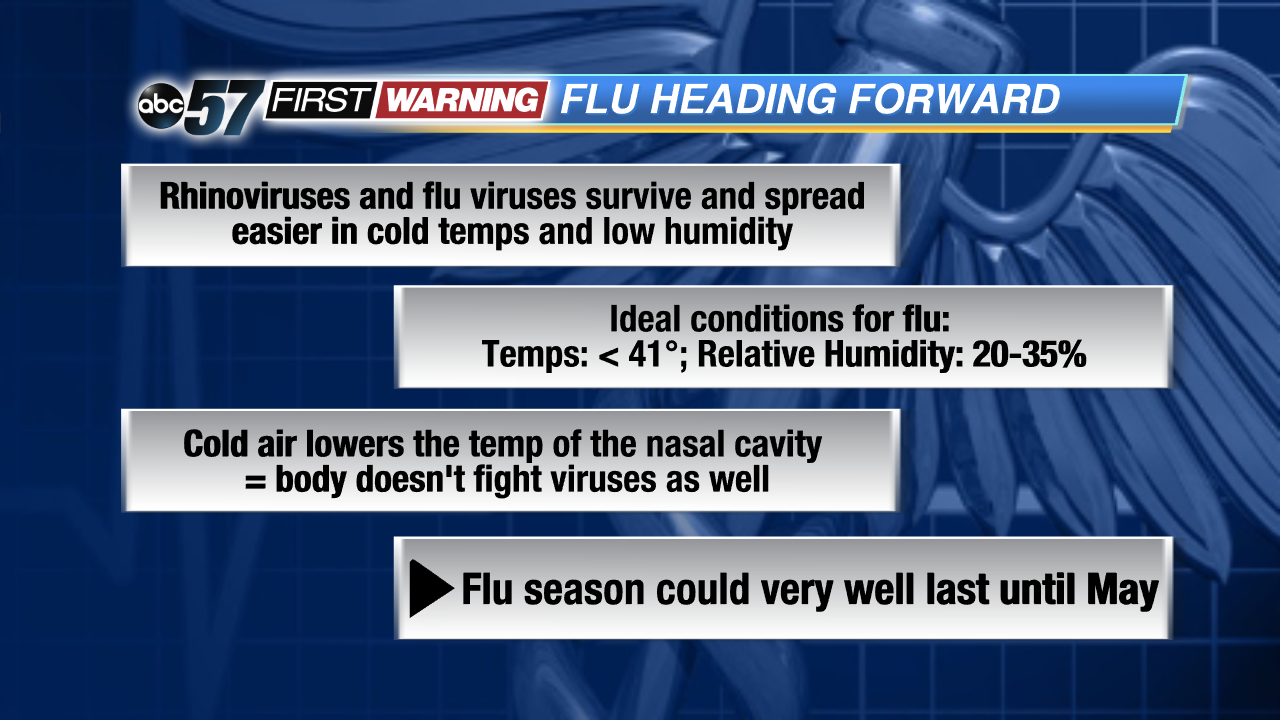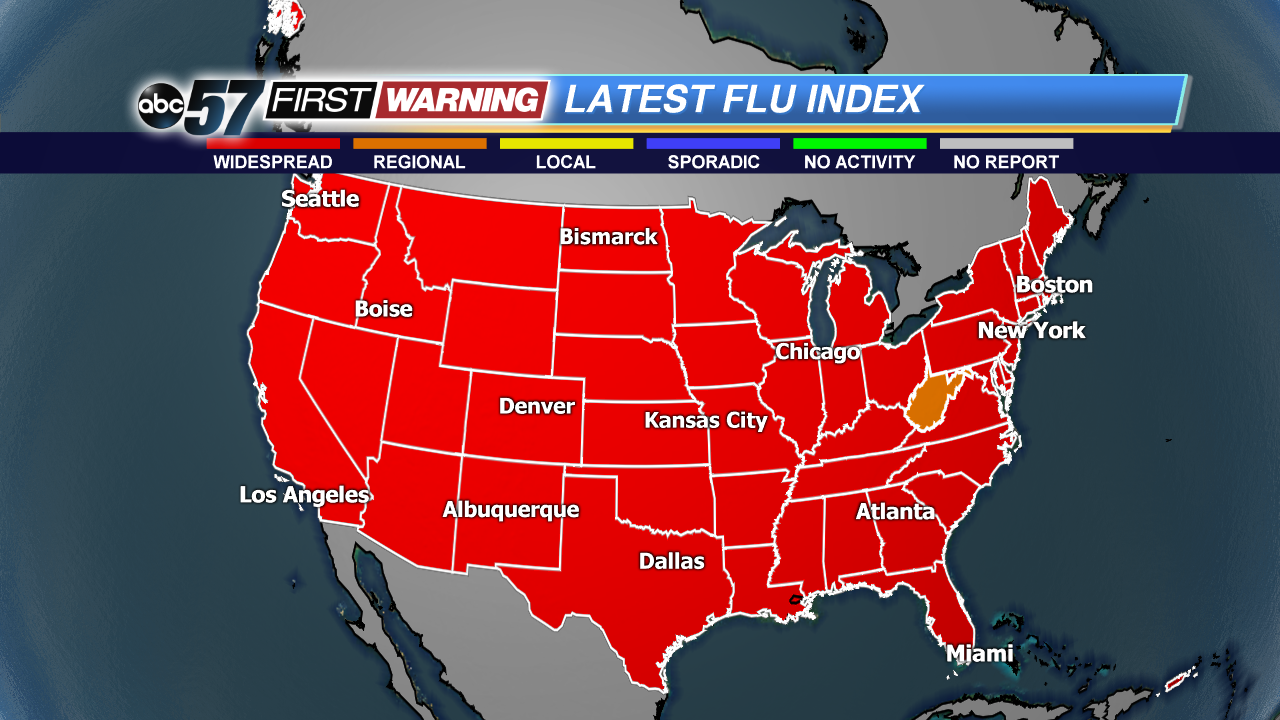 Flu index as of February 16th.
CDC
Flu index as of February 16th.
CDC
The calendar will flip to March on Friday, but flu season is far from over. Every state not named West Virginia or Hawaii is reporting "widespread" flu activity as of the latest
flu map from the Centers for Disease Control and Prevention. According to the CDC's latest
FluView Activity Update issued on February 16th, seasonal influenza activity increased once again; a trend that isn't necessarily shocking for February, but it's not something we want to hear heading into March.
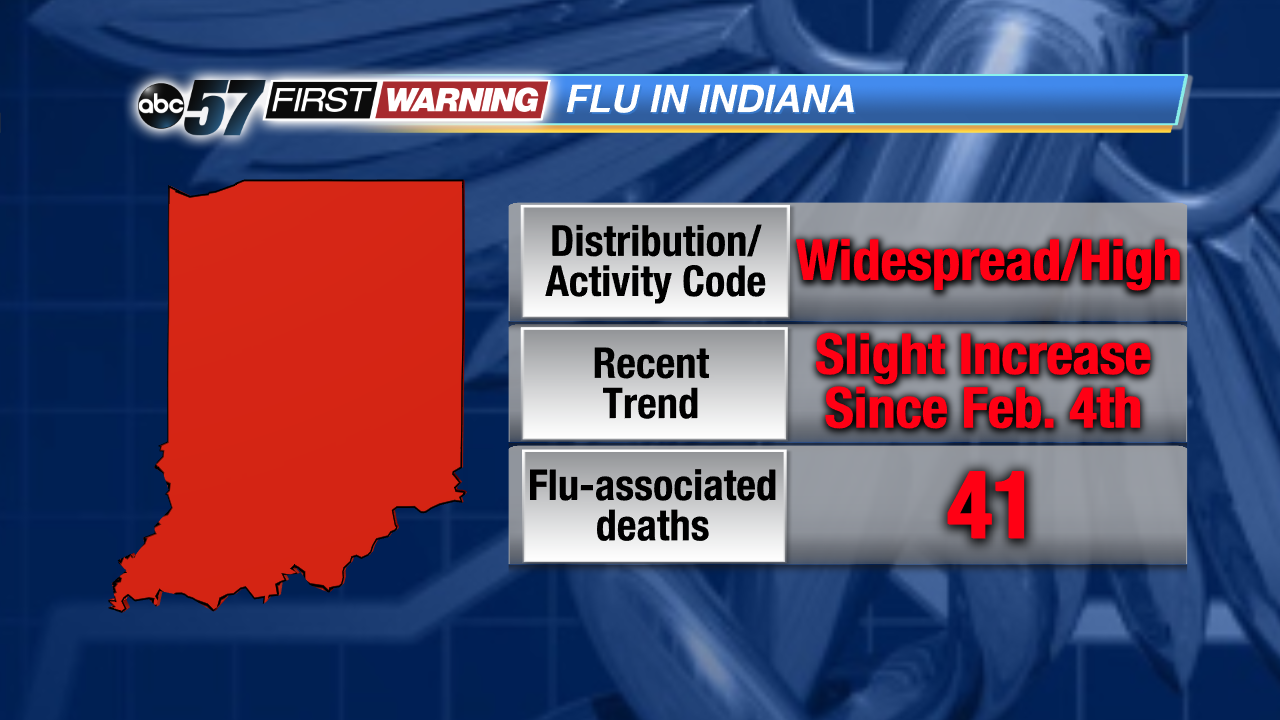 Latest flu update for Indiana.
in.gov
Latest flu update for Indiana.
in.gov
That means, as a whole, the U.S. is officially at its highest point thus far for flu activity for this flu season. It's possible, though, that we have yet to reach the peak. That's because March can be very supportive of high flu activity. In fact, there have been six instances since 1983 in which March was the month with peak flu activity. The most typical pattern, however, would be flu numbers declining as March gets underway; many times they drop off fairly rapidly.
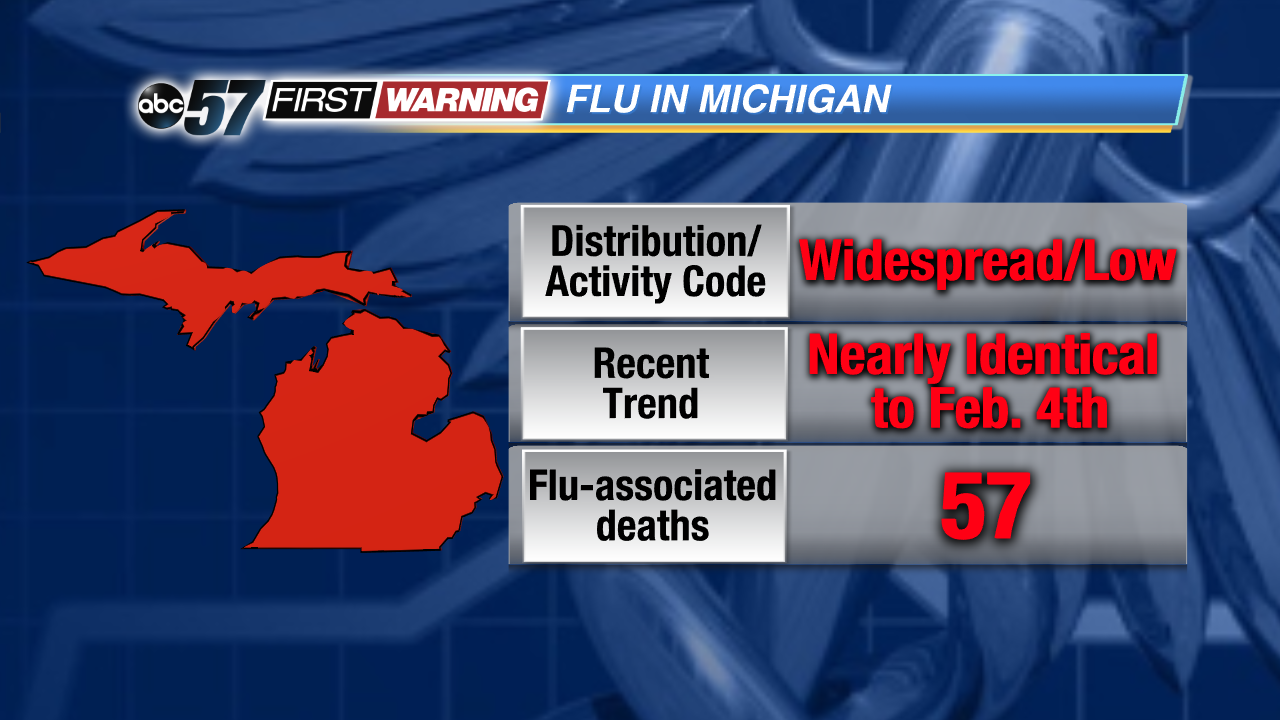 Latest flu update for Michigan.
CDC
Latest flu update for Michigan.
CDC
What makes the latest update even worse is the fact that there is a new strain of the influenza virus taking over. At the beginning of the flu season, the primary strain was influenza A H1N1. Now we have influenza A H3N2, a more severe and dangerous strain, taking over. Per the CDC, it accounts for more than half of all new flu cases in the United States.
Verywellhealth.com points out that from 2003 to 2013, the three flu seasons dominated by the H3N2 strains had the highest mortality rates. That excludes the 2009 H1N1 pandemic flu.
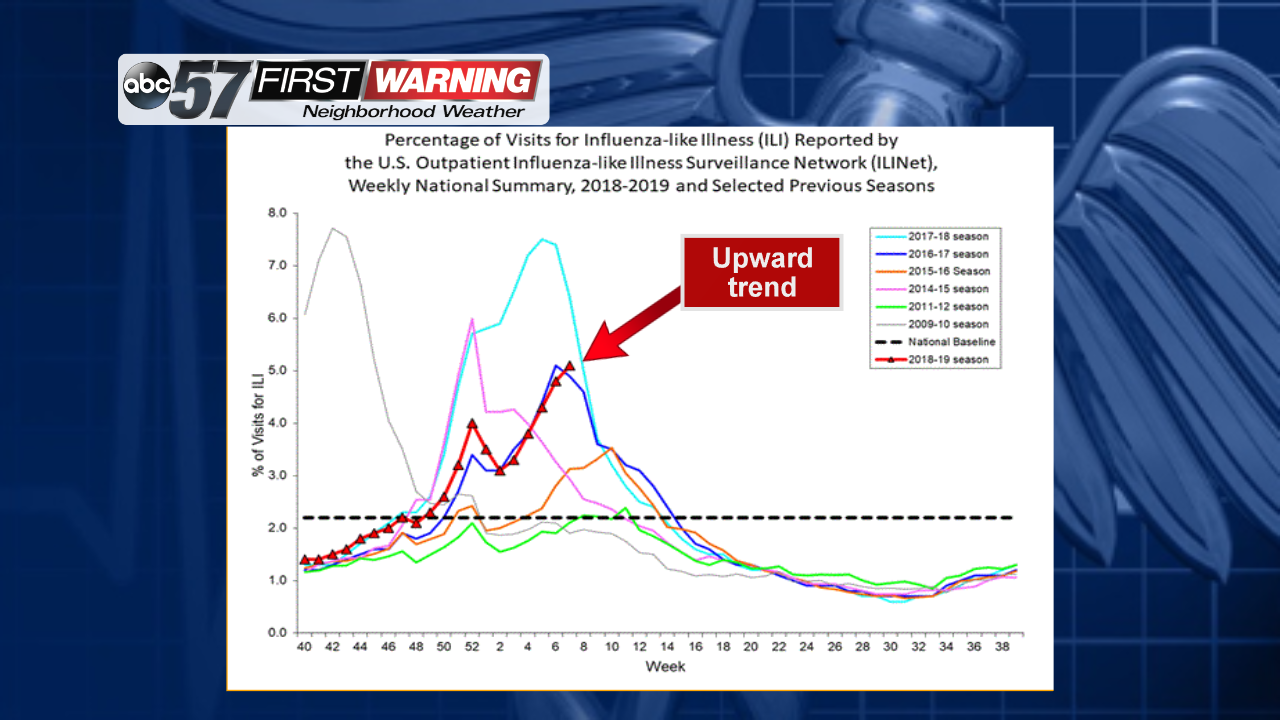 CDC
CDC
So, where are we heading in the flu department? Is a March peak realistic? As stated above, a peak in flu activity during the month of March is not that unusual. And it may be the best bet for this flu season because of the
weather we are expecting over the coming weeks. Unseasonably cold and dry air are expected to dominate much of the Lower 48 thru roughly the first 10 days of March, if not longer. Record low temperatures are expected for numerous cities across the country, especially during the first six days of the month.
Why does this matter? Well, unfortunately, viruses thrive in cold, dry weather. That includes rhinoviruses and influenza viruses. One
study (there are more than one) attempted to draw a correlation between weather and influenza activity levels. It found that "exposure to cold air outside or dry air inside during the wintertime may increase influenza virus transmission and potentially trigger a flu season." The study found that the flu virus is relatively stable and able to transmit easier through air with a relative humidity below 35% and temperature below 41°. It's important to note that this is only for colder climates like the one we have in the United States.
Another study broke down common cold-causing viruses (rhinoviruses) and the impact on them due to cold, dry weather. The study found that the risk of a human rhinovirus infection is associated with colder temperatures and lower humidity during the three days prior to the infection beginning. An important bit to keep in mind is that the study also found that the overall risk of rhinovirus infection was lower at subfreezing temperatures.
Cold, dry weather doesn't only support viral transmission, though. When the weather is cold, the temperature inside of your nasal cavity can be lowered. Per a study published in 2015, there's a "reduced innate immune response by infected airway cells" when the temperature is colder. In other words, your body isn't able to defend itself via its immune system as effectively when it's cold. Basically, cold weather acts as a double-edged sword in the virus world.
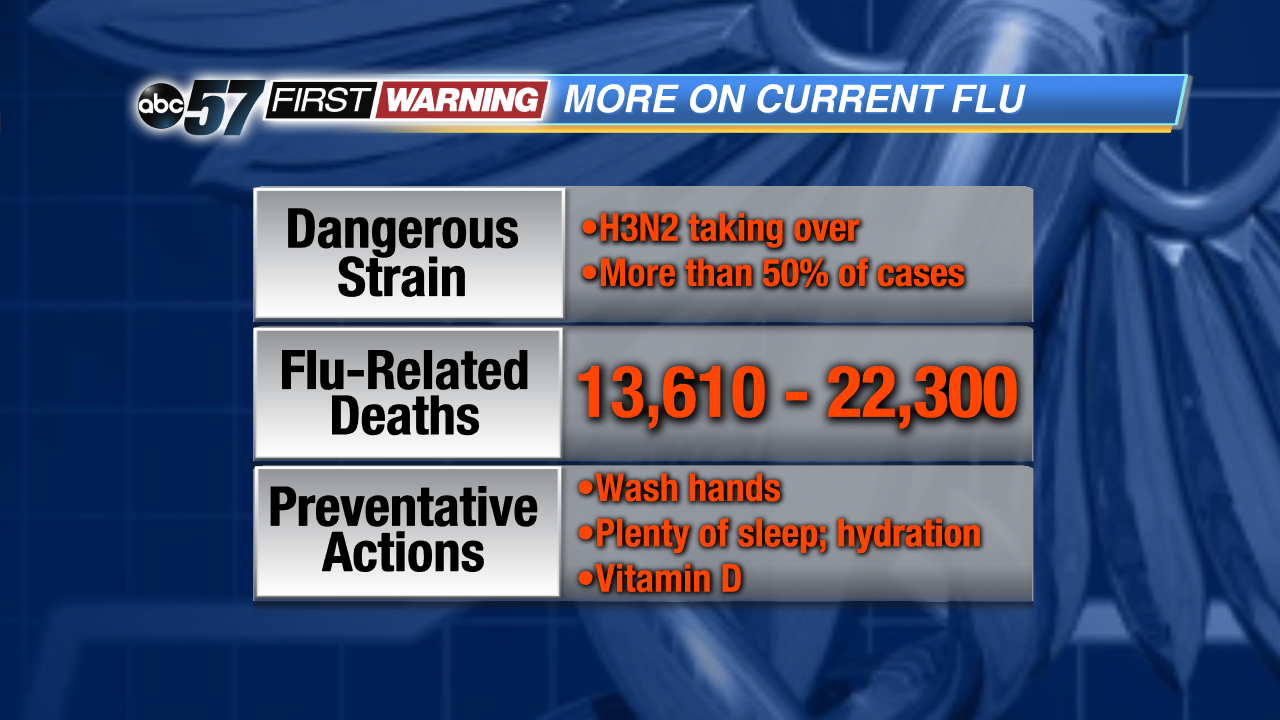 CDC
CDC
With flu season nowhere near done, it's important to enact in preventative actions. Simply washing your hands frequently, sneezing into a clean tissue and getting adequate sleep can go a long way in keeping you healthy. Staying hydrated and taking vitamin D will also help keep your immune system in working order!





